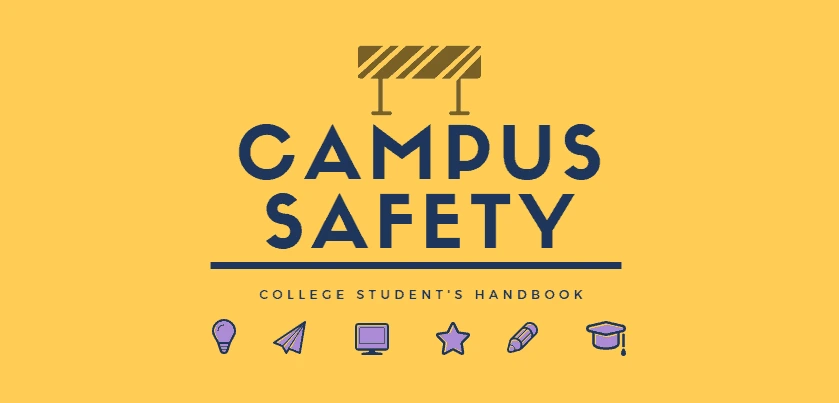In today’s world, the safety and security of university campuses are paramount. With rising concerns over crime, emergencies, and mental health issues, universities have increasingly prioritized the development of comprehensive campus safety programs. These initiatives are designed to protect students, faculty, and staff, fostering an environment conducive to learning and personal development. This article explores the importance of campus safety programs, their key components, and the role they play in enhancing the overall campus experience.

The Importance of Campus Safety Programs
University campus safety programs serve several vital functions:
- Crime Prevention: Effective safety measures help deter criminal activity, creating a safer atmosphere for everyone on campus.
- Emergency Preparedness: Comprehensive safety programs prepare students and staff for various emergencies, ensuring a prompt and organized response.
- Support for Mental Health: A secure environment contributes to the mental well-being of students, allowing them to focus on their studies without unnecessary stress.
- Community Engagement: Safety initiatives encourage collaboration among students, faculty, and staff, fostering a sense of belonging and shared responsibility.
Essential Components of Campus Safety Programs
To effectively address safety concerns, universities implement various programs tailored to their specific needs. Key components typically include:
1. Emergency Preparedness Training
Training programs equip the campus community with the skills necessary to respond effectively during emergencies. Key areas of focus may include:
- First Aid and CPR: Offering training in life-saving techniques empowers individuals to assist in medical emergencies.
- Active Shooter Drills: Conducting simulations prepares students and staff for potential threats, ensuring they understand appropriate actions to take.
- Fire Safety Education: Informing the community about fire hazards and evacuation procedures promotes a culture of safety.
2. Crime Prevention Strategies
Proactive measures help minimize risks and enhance campus safety. Common strategies include:
- Campus Security Patrols: Deploying trained security personnel to monitor campus areas helps deter criminal behavior through visible presence.
- Safety Escort Services: Providing safe transportation options for students during late hours reduces the likelihood of harassment or assault.
- Self-Defense Workshops: Offering training in self-defense techniques empowers students and enhances their personal safety.
3. Awareness and Education Campaigns
Educational campaigns aim to inform the campus community about safety issues and available resources. Initiatives may include:
- Sexual Assault Prevention Programs: Raising awareness about consent and bystander intervention, while providing resources for survivors.
- Substance Abuse Prevention: Educating students about the dangers of drug and alcohol misuse and promoting healthier lifestyle choices.
- Mental Health Awareness Initiatives: Informing the community about mental health resources and available support services.
4. Technology-Enhanced Safety Measures
Advancements in technology have led to innovative safety solutions, such as:
- Campus Safety Apps: Mobile applications that enable students to report incidents, access emergency contacts, and receive real-time safety alerts.
- Surveillance Systems: Installing security cameras to enhance campus monitoring and deter criminal activity.
- Emergency Notification Systems: Utilizing text messages, emails, and social media to communicate emergencies and safety updates promptly.
5. Collaboration with Local Law Enforcement
Partnerships with local law enforcement agencies strengthen campus safety through:
- Information Sharing: Establishing communication between campus security and local police to share relevant data and resources.
- Joint Training Exercises: Conducting collaborative training to improve responses during emergencies.
- Crime Data Analysis: Working together to analyze crime trends and develop targeted prevention strategies.
Encouraging Student and Staff Involvement
Students and staff can play an active role in campus safety by:
- Participating in Safety Programs: Engaging in training sessions, workshops, and awareness campaigns to enhance personal safety and community knowledge.
- Reporting Safety Concerns: Encouraging vigilance and prompt reporting of suspicious activities to campus security.
- Joining Safety Committees: Getting involved in committees focused on improving safety policies and initiatives.
Conclusion
University campus safety programs are critical for fostering a secure and supportive learning environment. By implementing comprehensive safety initiatives, universities can effectively address potential threats, educate their communities, and cultivate a culture of safety and responsibility. As students and staff work together to prioritize safety, they contribute to a vibrant campus atmosphere that allows everyone to thrive academically and personally. These collective efforts ensure that universities remain safe havens for education, enabling all members of the campus community to feel secure and supported in their pursuit of knowledge and personal growth.